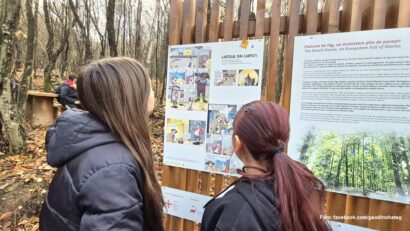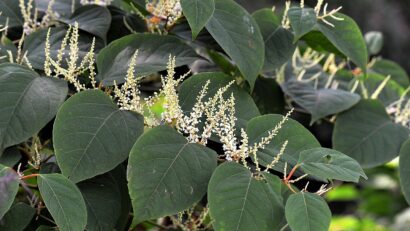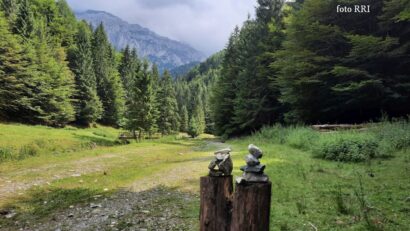Bucharest’s Green Areas
An overview of Romania's green areas

România Internațional, 28.08.2015, 12:01
Bucharests green areas have considerably been shrinking to make way for constructions of all types and shapes. In the past 25 years, Bucharest has lost roughly half of its green areas such as parks, gardens, and forests. A Bucharester enjoys on average less than a quarter of the green space the international norms accept. The 35 hundred hectares of green areas reported in 1990 have been reduced to only 1600 hectares. The precarious situation of the green areas plus the increased deforestation in parks and gardens are the result of the Regional Town Planning of 2000, which coincided with the promulgation of law 10 of that year on returning the properties abusively seized by the communist regime.
Under the aforementioned documents Bucharest has lost hundreds of hectares of green areas, while hundreds of hectares of green spaces in Bucharest parks are running the risk of becoming part of the ever-encroaching concrete jungle unless authorities are going to take action, conservationists have been cautioning. Dan Trifu is co-chair of EcoCivica Association, which together with the ‘Save Bucharest association has launched the largest number of legal actions against the real estate mafia operating in Bucharest.
Dan Trifu: “It all comes down to huge surfaces of land. Just think, in Tineretului Park for instance we have lost somewhere around 28 hectares of green land after many forged documents had been introduced in the planning legislation. Lets take another example: back in Ceausescus time, the Childrens Palace premises stood at over 44 hectares while under the town planning of 2000 it had only 16 hectares left. Those were the main instruments the authorities were using in order to get a hold of all these green oases. By the year 2000, many enterprises and industrial platforms had already been privatized, so there were no more spaces left for these retrocession mobsters. 2000 was a sad year for Bucharest, particularly after a retrocession law for the properties seized by the communists had been promulgated. This real estate mafia had cunningly drawn town planning schemes allowing them to stab all sorts of ugly buildings into the capitals former green places.
And so it happened that many green spots in Bucharest, actually genuine tree nursery areas, have overnight become building sites. Close to the Baneasa Forest, an entire 600 hectare district of villas has popped up almost overnight. They have even planned a six-lane motorway to cross the forest, but conservationists have managed to block the project. Hundreds of fruit trees have also been cut down illegally at the Baneasa Research Centre. Here is Dan Trifu again.
Dan Trifu: “Pretty big surfaces from the Baneasa Fruit-Growing Institute have become property of some dubious individuals, who are still seeking to destroy the whole area pushing forth their own urban planning schemes. There is another commercial platform close to Baneasa, where scores of hectares of orchard belonging to the Bucharest Agronomic Institute have been turned into a concrete jungle causing severe prejudices. Romanian DN1 road used to have the most beautiful plantation of red oak trees, which was completely cut down in order to make way for a building compound. The effects of this, such as huge loss in vegetation, can be seen in the frequent traffic jams and the high pollution degree in the area.
Over one million trees have been cut in parks and gardens in Bucharest. Half of the total number of trees, which were once lining the streets, has disappeared, Dan Trifu says.
Dan Trifu: “We estimate some 150 hectares of green space are affected. All the constructions here were part of the Regional Town Planning in 2000. People dont know that some of the green spaces around blocks of flats and other green plots of land are not included in planning documents and here is the trick. Its some sort of a crime committed by the local authority in Bucharest, which refused to grant a special status to these areas. They included these zones either into industrial areas or among residential areas. Out of the Izvor Parks entire surface, 8 hectares are construction sites part of the Bucharests Town Planning…can you imagine that? Besides the 28 hectares weve lost in Tineretului Park, three more have been allotted for the construction of a private University. Half of the Polytechnics Institutes surface has been returned and there is a plan for the construction of three towers, each 26 stories tall…. Then there is another park Prisaca Dornei, which has lost 6 hectares out of its entire surface. Whats left today is only a shadow of the park it used to be, now being full of restaurants, terraces and villas on what was once one of the greenest regions in Bucharest. And last but not least we should mention IOR, a park now called Alexandru Ioan Cuza, because half of its surface has been returned.
So, all the parks in Bucharest have been maimed, while some smaller ones have entirely vanished. There were parks saved by environmental agencies after sustained legal efforts. For instance the Carol Park was supposed to become the site of a huge cathedral while the garden close to the North Station was about to be turned into an underground parking lot. Bucharest has 23 square meters of green space per capita, including parks, cemeteries, green spots and forests. Environmentalists are contesting these figures arguing the authorities have also included the Baneasa Forest among the citys green assets. Conservationists believe that Bucharest has around 8.5 square meters per capita. Anyways, one thing is clear, turning the city into a permanent construction site has caused massive pollution, killing thousands of people annually.






























